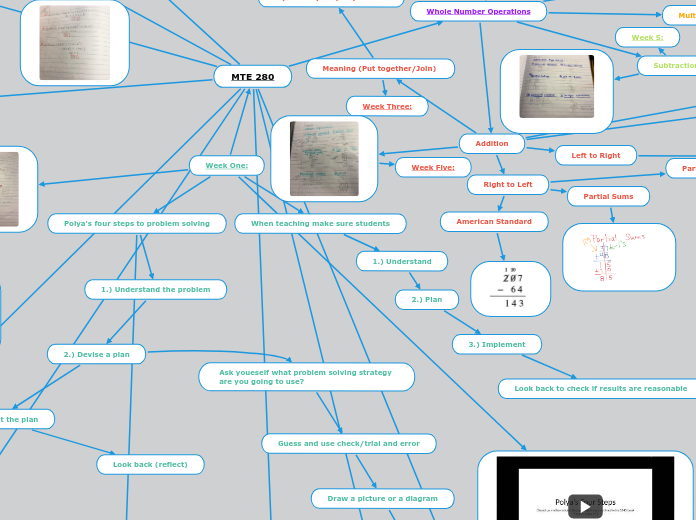przez Leila Simeone 2 lat temu
149
Week One:

przez Leila Simeone 2 lat temu
149

Więcej takich
Division: +3x+2=+6
+6 (divided) +2=+3
+6 (divided) +3=+2
% Problem Solving: * is = of is x what is n % is decimal (8% is 0.08
They tell kids to bring the decimal point up
Percent=Per 100
Pie=3.14 not a decimal it is a irrational number
-Divisibility
-Factors-multiples>Fraction work
-By 4: Last two digits are divided by 4
-By 2: 0,2,4,6,8
-By 5: 0,5
-By 10: 0
-By 3: Sum of digits is divided by 3
Make sure students:
4.) Look back reasonably
-Base-10 System
-The Value of the number depends on the place
-The numbers get bigger by 10 times (1/10) x (1/10)= (1/100)
Numbers to the right of the decimal are part of the unit
Week Four:
Meaning: Repeated Addition
(3 x z) is 3 groups of z
The Identity Property of Multiplication: (a x 1=a) and (a x 0=0) --> Zero property of multiplication
The Commutative Problem of Multiplication: (a x b)=(b x a)
Associative Property of Multiplication: (a x b) x (c)= (a x (b x c)
Week 5:
Meanings
1.) Take Away 5-2=3
2.) Comparison
3.) Missing Add End
7-3=4
7 is the Minuend
3 is the subtrahend
4 is the Difference
Intager Subtraction
Left to Right Algorithm
Reverse Indian
European Mexican
Week Five:
Meaning (Put together/Join)
Week Three:
1.) Identity Property: a+0=a
2.) Commutative Property: a+b=b+a
Associative Property: (a+b)+c=a+(b+c)
Lattice
Expanded Notation
Place Value Explicit
Left to Right
Left to Right Algorithom
Right to Left
Partial Sums with Place Value
Partial Sums
American Standard
3.) Implement
Look back to check if results are reasonable
Ask youeself what problem solving strategy are you going to use?
Guess and use check/trial and error
Draw a picture or a diagram
Act it out
Make the problem simpler
Look for the pattern
Work backwards
Make an organized list
3.) Carry out the plan
Look back (reflect)